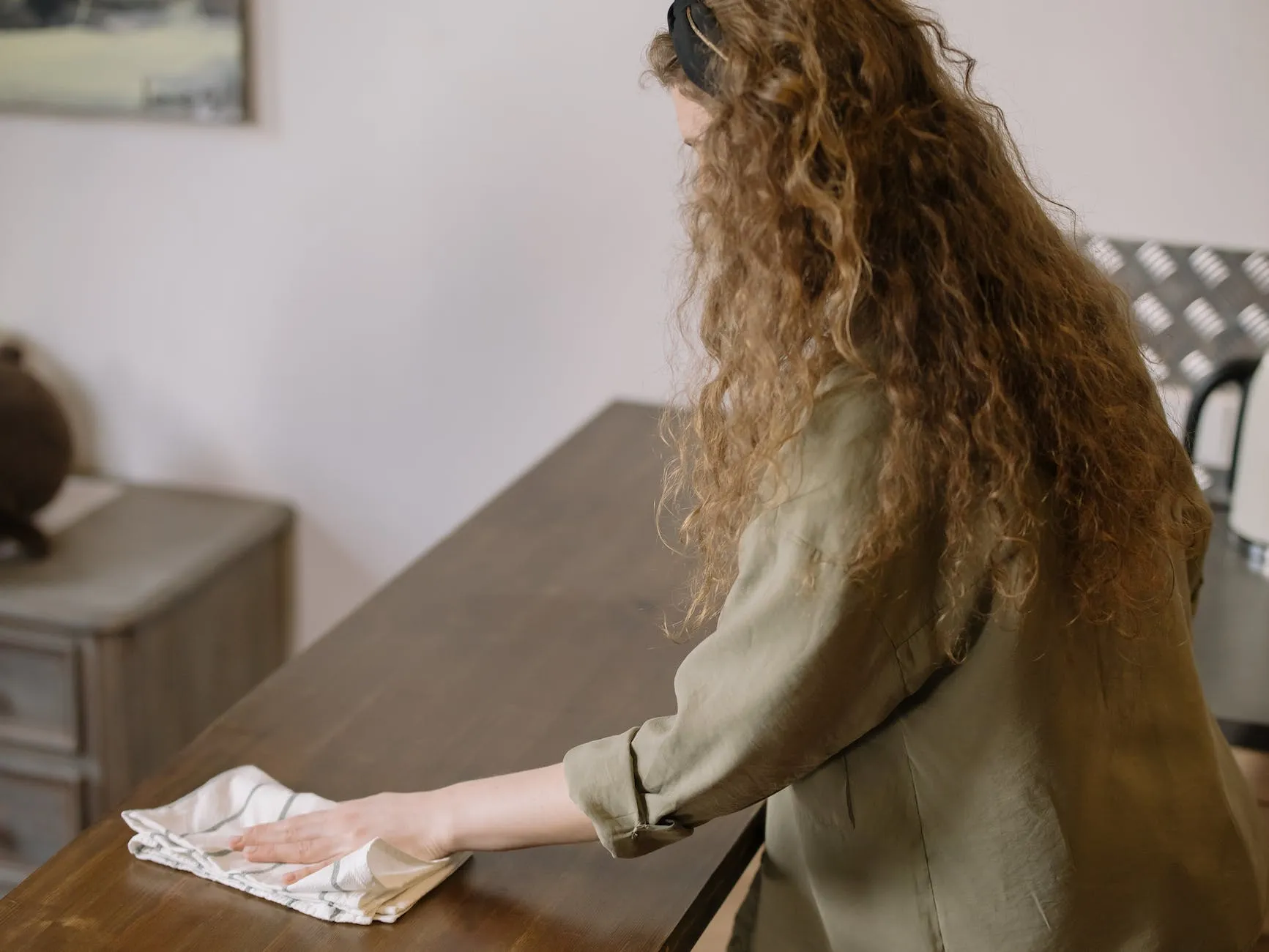When it comes to the kitchen, it’s frustrating when the kitchen faucet won’t stay in place. Between the dripping water and the constant mess, it seems like disaster awaits every time you turn on the tap. Luckily, fixing a kitchen faucet is quite simple.
This blog post will walk you through the steps necessary to fix any clogged or faulty faucet. From there, you should be able to enjoy your kitchen without any interruptions!
Why The Kitchen Faucet Won’t Stay in Place?
If your kitchen faucet won’t stay in place, there may be a problem with the water supply. To check the water supply, turn off the water at the main valve and use a meter to measure how much pressure is flowing through the faucet. If the pressure is low, you need to replace the water supply line. If the pressure is high, it may be due to a clog in the pipe or a bad spigot. In either case, you will need to take care of the problem before you can fix the faucet.

Kitchen Faucet Spout Came Off
If you’re experiencing issues with your kitchen faucet spout coming off, there’s a good chance that it’s due to corrosion. This can be caused by water seeping in and healing the metal over time, making it weak and prone to breaking. In most cases, this issue can be remedied by replacing the spout. If that’s not an option, or if you’re just looking for a faster fix, you can try using a pot gripper to keep the spout on.
If you can still get water to come out of the faucet, it’s likely that the spout just needs to be reattached. Try turning the knob on the side or top of the faucet and see if the water flow changes. If not, you’ll need to take apart the faucet to fix it.
Kitchen Faucet Loose from Countertop
If you find that your kitchen faucet is constantly coming loose from the countertop, there are a few simple steps that you can take to fix the issue.
Remove the old faucet by unscrewing the mounting screws and then pulling it free. If your faucet has a gasket, be sure to replace it before reinstalling the new one. Tighten all of the mounting screws in an appropriately tight sequence and then test the faucet by turning it on. If everything looks good, reattach the hose and plug into an outlet.
Pull Down Kitchen Faucet Won’t Stay Up
If you are experiencing a kitchen faucet that won’t stay in place, there are a few things you can do to fix the problem.
First, make sure that the connector is secure. If the connector is loose, it will cause the faucet to not stay up.
Second, check to see if the spray arm is properly installed on the faucet. If it isn’t, it will also cause the faucet to not stay in place.
Finally, try tightening each of the screws on the spray arm.
Pull Down Faucet Won’t Retract
If your kitchen faucet won’t retract, some easy fixes may occur.
- Check the water pressure. If it’s low, the faucet might not be able to turn all the way off, which could cause the handle to stay up when you try to retract it. Try increasing the water pressure in the house by turning on a faucet in another room or by using a pressure booster hose.
- Make sure that the screw that holds the handle in place is tight. Loosen it up and try retracing your steps to see if something else is causing the problem–like a kink in the hose–and tighten as necessary.
- If none of these solutions work, you may have to take apart the faucet and fix whatever is causing it not to retract. This can be tricky, so if you’re not confident about doing it yourself, call a plumber or contractor for help.
If you still can’t get your kitchen faucet to retract, it’s likely that there is something wrong with the mechanism. Contact a professional to have it fixed.

Lubricate Pull Out Faucet
If your home has a centrally-located pull-out faucet, it’s important to remember to lubricate it regularly. This is especially true if the faucet is used frequently, which can wear down the metal mechanism over time. If the spout becomes difficult to move or if water starts coming out slowly, it may be time for a lubrication outage.
There are several types of lubricants that can be used on pull-out faucets, so make sure to pick one that best suits your needs. For example, mineral oil will create a protective coating on the metal, while silicone will help reduce friction and keep the spout moving smoothly.
Loose Kitchen Faucet Handle
If you have a loose kitchen faucet handle, there are a few things you can do to fix it.
First, check to see if the stem is loose. If so, tighten the stem by hand until it’s secure.
Next, try tightening the washer underneath the handle. If that doesn’t work, you may need to replace the handle.
How To Fix a Kitchen Faucet That Won’t Stay in Place?
If you have a kitchen faucet that won’t stay in place, there are a few things you can do to fix it. First, check the stem for any damage. If there is any, replace the stem. Next, make sure the rubber washers are properly installed on the valve stem and cock handle. Finally, tighten the screws on the valve stem and cock handle.
Preventing A Kitchen Faucet That Won’t Stay in Place
If you’re like most people, you probably don’t think much about your kitchen faucet. But if your faucet doesn’t stay in place, it can create major problems in your home. Not only is it hard to coordinate dinner time when the water keeps flowing out of the sink, but a loose faucet can also lead to flooding and costly repairs.
You can do a few things to help prevent a loose kitchen faucet from happening.
First, ensure that your home’s water pressure is up to standard. If there’s too little pressure, then water will start leaking from any plumbing flaws and fittings.
Second, use a towel or rag to gently secure the stem of the faucet to the side of the countertop or sink while you fill-up the sink with water. This prevents the faucet from moving while you’re filling it up and stops it from turning on by itself.
Finally, always use caution when turning on the hot water supply – especially if there are children nearby. A blazing hot pot of water could easily cause serious injuries!
Conclusion
If your kitchen faucet won’t stay in place, you can do a few things to try and fix the problem. If the faucet is leaking, you may be able to repair it by tightening the washer or fixing the gasket. If the faucet still won’t stay on, you may need to replace it.
Frequently Asked Questions:
Why does my kitchen faucet keep coming loose?
One common issue with kitchen faucets is that they can become loose over time. This can be due to several factors, such as improper installation, corrosion, or simply wear and tear. When a faucet becomes loose, turning it on or off can become difficult, and it may even start leaking water.
How do you fix a kitchen faucet that is moving?
If your kitchen faucet is moving, there are a few things you can do to try and fix the problem. First, check to see if the faucet handle is twisted or bent. If it is, you can straighten it out with pliers. If that doesn’t work, you can try tightening the hose connector by turning it counterclockwise until it’s snug. Finally, if all of these solutions fail, you may have to replace the kitchen faucet.
How do you fix a faucet that won’t stay up?
If you have a kitchen faucet that won’t stay up, there are a few things you can do to fix it. If the faucet is stuck in the up position, you can try using a plunger to push down on the spout. If the faucet is stuck in the down position, you can use a wrench to turn it counterclockwise. If neither of these methods works, you may need to replace the faucet.
What holds a kitchen faucet in place?
There are a few different things that can hold a kitchen faucet in place. The most common is the knob on the handle. If it’s loose, you can tighten it with a wrench. Another common thing that can hold a kitchen faucet in place is the spout. If it’s crooked or off-center, you can adjust it with a screwdriver. You may have to replace the faucet if the spout isn’t movable.
